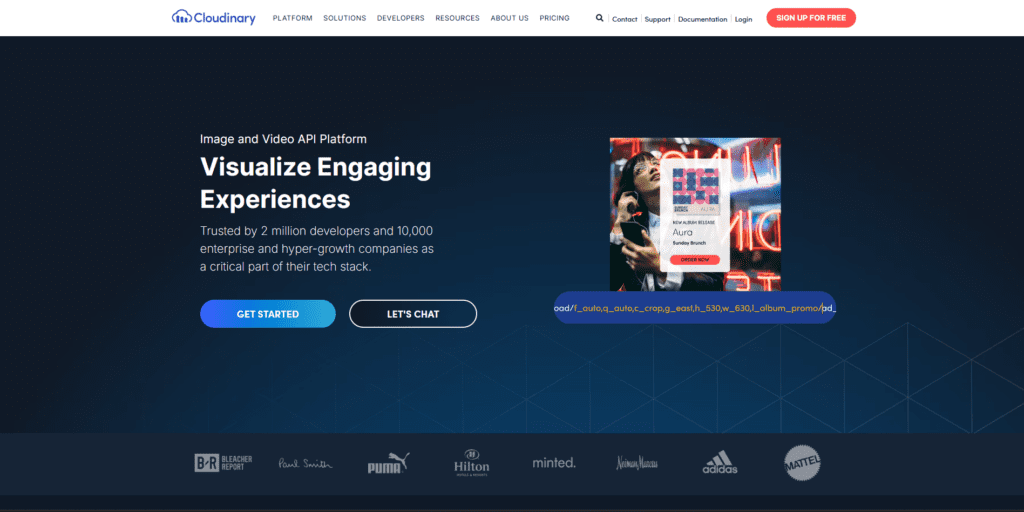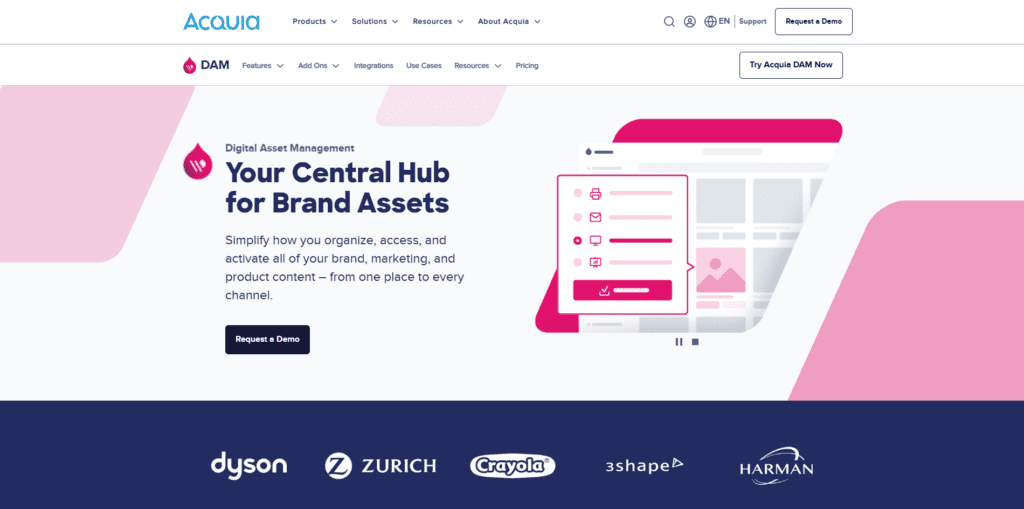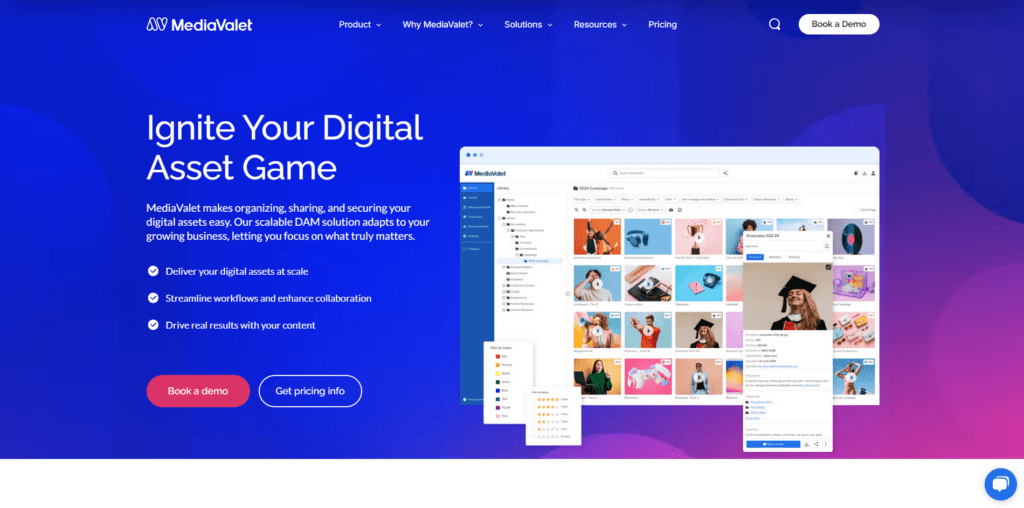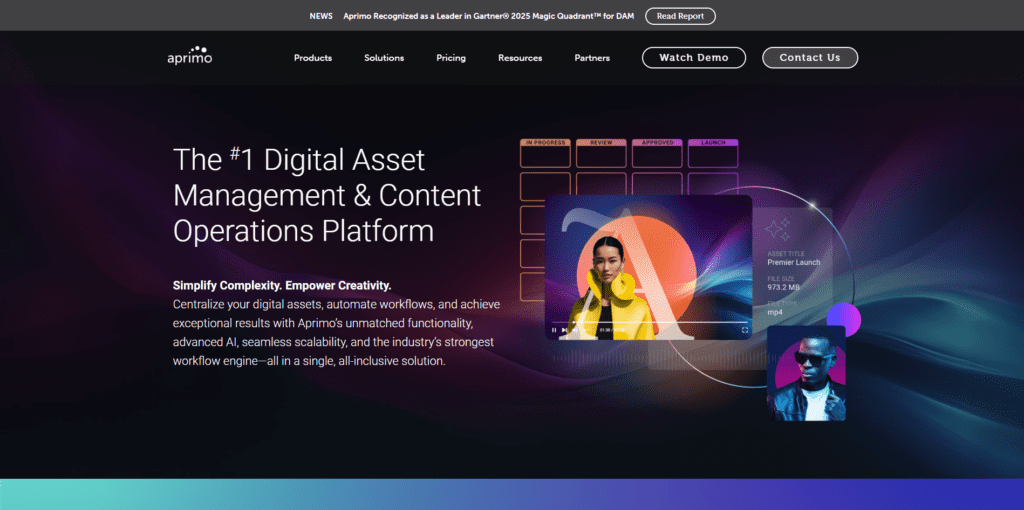9 Best Cloudinary Alternatives and Competitors for 2025
Digital Asset Management
Updated on February 17, 2025
Selecting the right tool for managing digital assets in e-commerce is crucial. Whether you need seamless media delivery or advanced content optimisation, finding a solution tailored to your needs makes all the difference.
Cloudinary is a popular choice, but is it the best digital asset management software for your business? Let’s explore Cloudinary’s core features, its pros and cons, and the top Cloudinary alternatives for 2025.
What is Cloudinary?
Cloudinary is a software-as-a-service (SaaS) provider for managing all web or mobile application media assets in the cloud. This is a long winded way of saying digital asset management software.
It offers an end-to-end solution for all image and video needs, including upload, storage, administration, transformation, and optimised delivery.
As a cloud storage solution, it also helps you organise assets, serve images for the web, and manage your media library.
Cloudinary’s media asset management service includes fast CDN servers for fast upload and download rates, highly available cloud storage for safe and always available assets, and high-performance media portals and processing servers for creating web assets.
With a focus on automating image and video workflows, Cloudinary has become a go-to for companies needing reliable media hosting and performance enhancements.
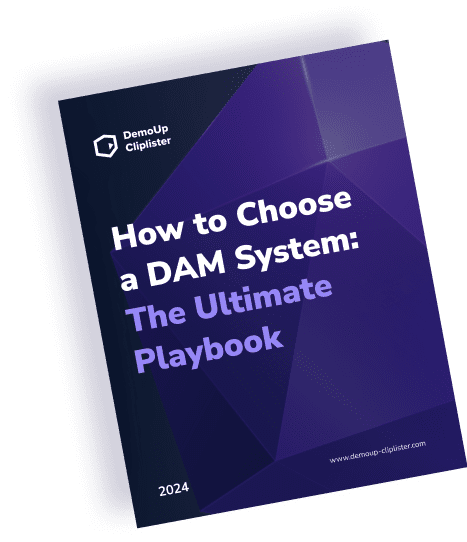
Comparing DAM Providers? Download the free playbook!
Free download nowCloudinary’s Core Features
Cloudinary optimises, transforms, and delivers visual assets for e-commerce, media, and marketing industries. Its API-driven platform supports scalability for businesses handling large volumes of assets. Here are some of the primary features it offers:
Image and Video Optimisation
Cloudinary automatically optimises media for speed and quality. It uses AI-driven compression to reduce file sizes without compromising visual standards.
This feature is ideal for e-commerce sites aiming to improve page load speeds while maintaining high-quality visuals that drive engagement.
Dynamic Media Transformations
Transform assets dynamically via URL parameters or APIs. Resize, crop, or apply filters to create personalised customer experiences.
Dynamic transformations make it easier for marketing teams to deliver targeted campaigns across different channels without duplicating assets.
Multi-CDN Delivery
Cloudinary integrates with leading CDNs for fast, global media delivery. Its caching system ensures quick load times regardless of user location.
This feature benefits retailers with international audiences, ensuring consistent performance across borders.
Asset Management Dashboard
A centralised dashboard allows users to upload, organise, and retrieve assets efficiently. With tagging and metadata features, finding files is hassle-free.
This tool is especially useful for teams managing thousands of assets across campaigns, channels, and products.
Cloudinary Product Gallery
The Cloudinary product gallery provides an interactive user interface for displaying product images and videos and other rich media to people on your website. That means online shops can provide visual experiences to anyone who lands on their website.
What it doesn’t do is product content syndication, which helps you put video, 3D models, and other parts of your product media library on websites that are not yours.
Cloudinary Integrations
Cloudinary supports integrations with key tools, including:
- Zapier
- Shopify
- WordPress
- Adobe Creative Suite
- Salesforce
- Magento
- Slack
- CMS Systems
- PIM Systems
Cloudinary Pros
- AI-driven optimisation
- Dynamic transformations
- Multi-CDN support
Cloudinary Cons
- Requires developer expertise for full customisation
- Complex pricing tiers
- Limited features for small-scale users
Cloudinary Pricing
Cloudinary offers a free tier with basic features, but advanced capabilities require a subscription. Plans are usage-based, with pricing increasing as storage and transformation needs grow.
Cloudinary Customer Ratings
G2: 4.5/5
OMR: Not listed.
▶️Compare Cloudinary vs DemoUp Cliplister!
The 9 Best Cloudinary Alternatives for 2025
Finding a reliable alternative to Cloudinary is essential for e-commerce brands and retailers looking to manage millions of visual assets efficiently. The right tool can help improve asset performance, simplify workflows, and enhance user experiences. Here are the top alternatives.
1. DemoUp Cliplister: The Top Cloudinary Alternative

DemoUp Cliplister is a cloud-based digital asset management platform that provides brands and e-commerce shops a centralised repository for managing, organising, and sharing images, videos, or any other file type.
As far as Cloudinary alternatives go, DemoUp Cliplister has many features that make it a better fit for many businesses, especially within the e-commerce space.
While we could simply declare ourselves the best Cloudinary alternative and market ourselves to every type of business, that’s not helpful for anyone. Here are some of the features you get with DemoUp Cliplister:
Visual Content Syndication
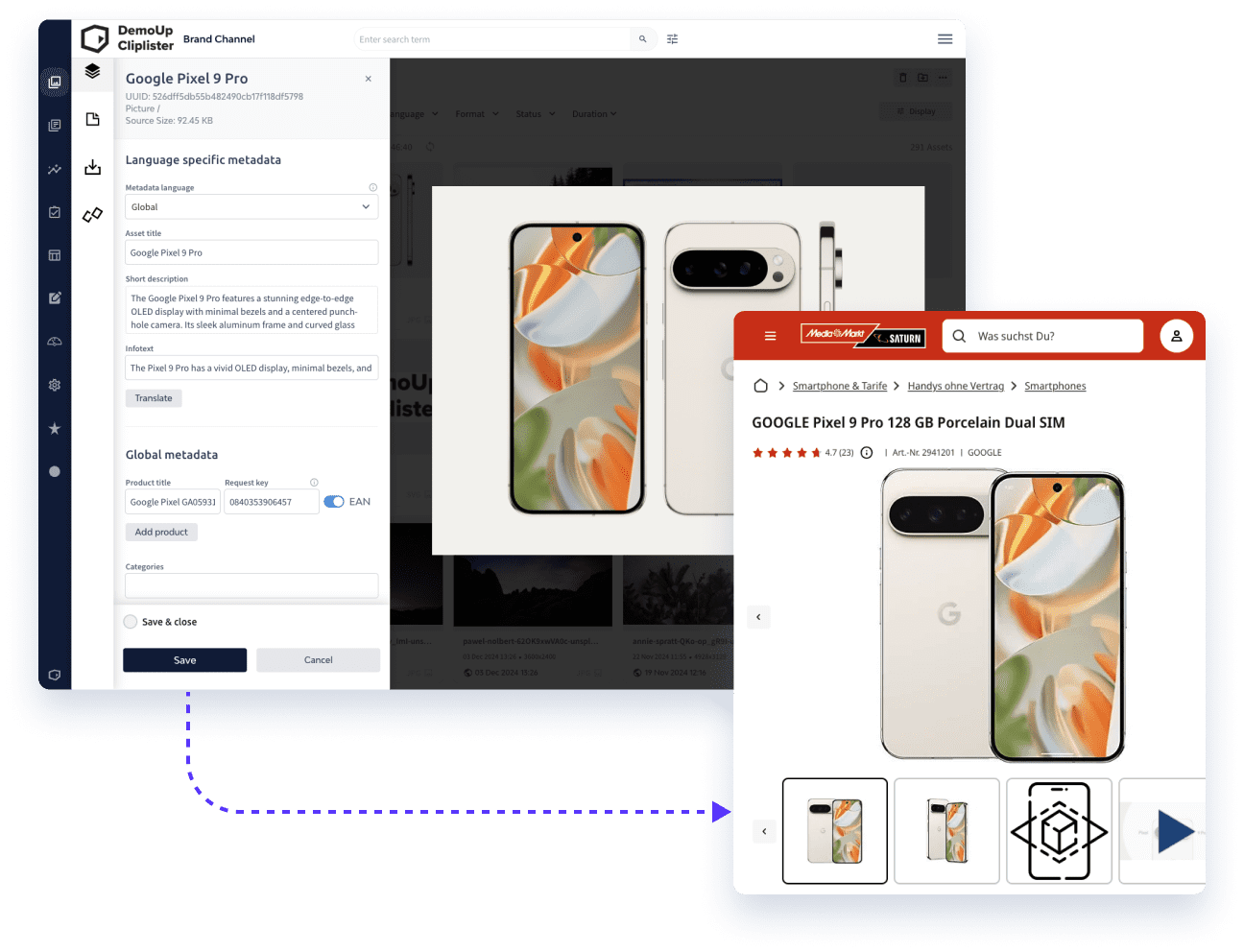
Our network connects 450+ retailers with content from 2,500+ brands. As a dual sided platform, DemoUp Cliplister aims to bridge the content gap between brands and their leading e-tail outlets.
For brands, DemoUp Cliplister lets you publish videos and 3D models directly to the product gallery with minimal delays and maintain consistent visuals across channels.
For retailers, it offers easy access to thousands of directly uploaded, brand-created assets, ensuring your content is always compliant and up-to-date.
Digital Asset Management

Centralised storage allows brands and retailers to organise visual assets, streamline workflows and integrate into any PIM system via a powerful API. It also features powerful metadata management capabilities so you can easily stay on top of millions of product assets.
Dynamic Multi-CDN
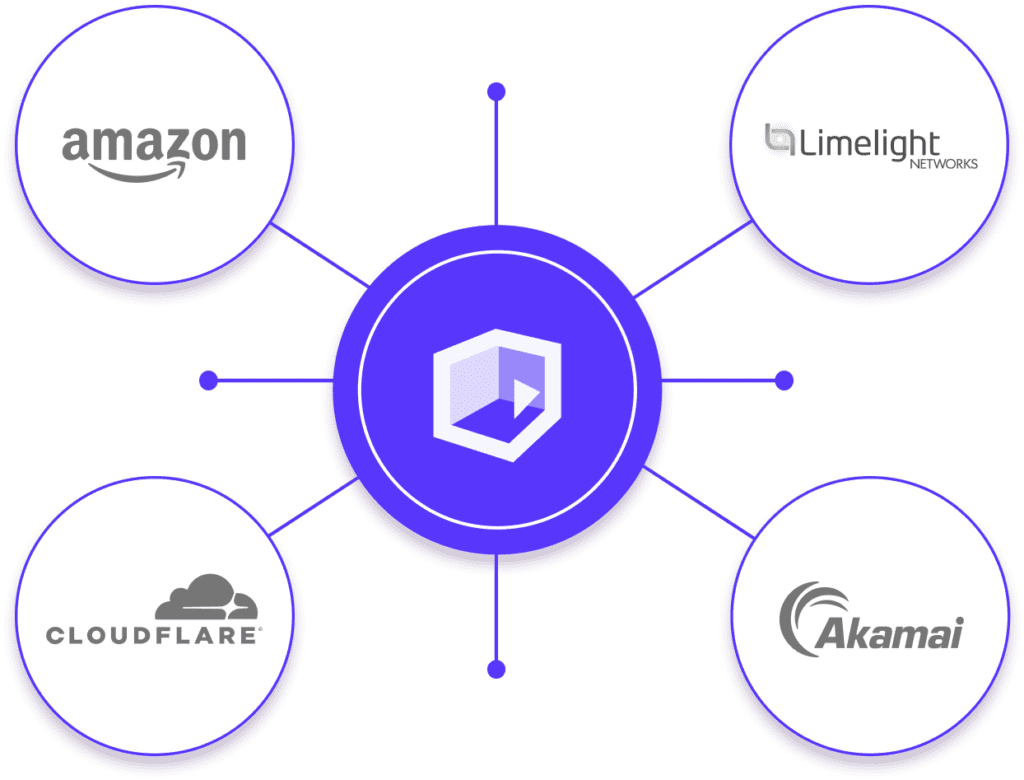
DemoUp Cliplister’s Dynamic Multi-CDN ensures fast and reliable content delivery across global regions. Because it leans on multiple networks, it reduces latency and improves load times, even during peak traffic.
Content Creation Services
Scale your asset production and delivery with tailored content creation services designed for e-commerce. We offer:
- Review Video Production
- 3D/AR Model Production
- Animated Video Clips
- Verified Review Curation
- …and much more
EAA Compliance Modules
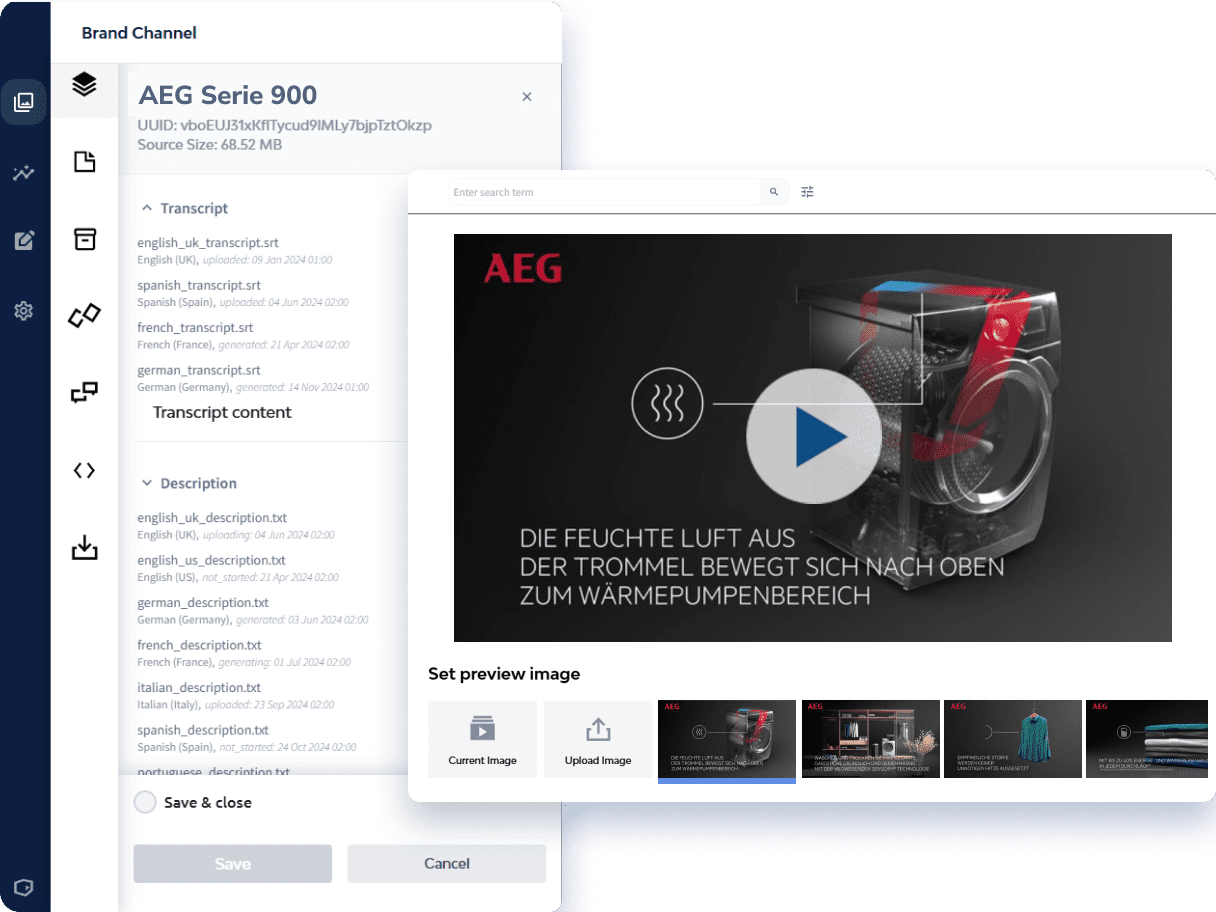
Starting in June 2025, e-commerce brands and shops must ensure content meets specific accessibility standards. You can manage your EAA compliance efforts directly inside our DAM, including for:
- Videos
- Product Images
- 3D/AR Models
- PDFs
DemoUp Cliplister Integrations
Connect to any PIM, CMS or shop system through a powerful API for full customisation.
DemoUp Cliplister Pros
- Direct integration with product galleries
- Automated content updates
- Industry-leading tools for digital product presentations
DemoUp Cliplister Cons
- Limited reach outside Europe and Latin America
- Best suited for B2B2C e-commerce models (i.e., trade marketing)
DemoUp Cliplister Pricing
Our pricing is tailored to your needs. Request a demo today to explore the best solution for your business.

Compare Cloudinary vs DemoUp Cliplister
Discover everything you need to choose the right DAM.
2. Bynder
Bynder is a DAM platform designed for managing digital assets and maintaining branding standards. It provides tools to help businesses organise and distribute content efficiently.
The platform offers an interface that supports cross-departmental collaboration. Marketing teams can manage campaigns with consistent assets, while developers can leverage integrations for smoother asset deployment.
Bynder also supports brand consistency across various markets. Its workflows can be customised to fit specific organisational processes and needs.
Bynder Pros
- Intuitive asset library
- Customisable workflows
- Brand guidelines enforcement
Bynder Cons
- Expensive for small teams
- Limited CDN features
- No direct e-commerce tools
Bynder Pricing
Bynder does not publish pricing so be sure to reach out to a sales person for a quote.
Ratings and Reviews:
- G2: 4.4/5
- Capterra: 4.3/5
3. Acquia DAM (Widen Collective)
Acquia DAM, formerly Widen Collective, provides enterprise-ready DAM solutions. Acquired by Acquia in September 2021, it offers advanced metadata tagging to help organisations manage and retrieve assets effectively. Detailed analytics and a robust API further set it apart, supporting efficient workflows and performance insights.
Acquia DAM Pros
- Advanced metadata tagging
- Analytics for asset performance
- API integrations
Acquia DAM Cons
- Steep learning curve
- High upfront costs
- Limited video editing tools
Acquia DAM Pricing
Custom pricing based on business size and requirements.
Acquia DAM Customer Ratings
- G2: 4.5/5
- Capterra: 4.4/5
4. MediaValet
MediaValet is a cloud-based DAM platform designed for teams managing extensive content libraries. It emphasises scalability and enterprise-grade security, ensuring reliable performance for complex needs. With AI-driven tagging and collaborative tools, it supports efficient workflows across large organisations.
MediaValet Pros
- Advanced security features
- AI-driven tagging
- Easy collaboration tools
MediaValet Cons
- Limited integrations compared to competitors
- Higher cost for advanced features
- May be overly complex for small teams
MediaValet Pricing:
Custom pricing available upon request.
MediaValet Customer Ratings
- G2: 4.3/5
- Capterra: 4.2/5
5. Adobe Experience Manager Assets
Adobe Experience Manager Assets is a premium DAM solution for managing digital content at scale. It integrates with Adobe’s suite of tools, ensuring a seamless experience for Creative Cloud users. This makes it an effective option for creative teams who make complex assets using Adobe tools.
Adobe DAM Pros
- Deep integration with Adobe tools
- Comprehensive asset organisation
- Advanced editing capabilities
Adobe DAM Cons
- High cost
- Steeper learning curve
- Best suited for teams already using Adobe products
Adobe DAM Pricing
Custom pricing based on organisational needs.
Adobe DAM Customer Ratings
- G2: 4.2/5
- Capterra: 4.1/5
▶️Looking at Adobe DAM? Check out our list of alternatives!
6. Canto
Canto is a cloud-based DAM provider that allows you to manage, organise, review, and share web assets like images and videos. Canto provides features like customisable workflows, automatic image resizing, and advanced searches.
Canto Pros
- Easy onboarding
- Visual asset organisation
- Flexible folder structures
Canto Cons
- Fewer advanced features for enterprises
- Limited customisation options
- Pricing may not scale well for large teams
Canto Pricing
Tiered pricing plans available; contact for details.
Canto Customer Ratings
Capterra: 4.5/5
G2: 4.6/5
▶️Compare DemoUp Cliplister vs Canto!
7. FotoWare
FotoWare provides DAM solutions tailored to industries such as media, education, and government. It features workflow automation to streamline content processes and ensure efficiency. Additionally, FotoWare’s focus on security offers robust protection for sensitive digital assets.
FotoWare Best Features
- Workflow automation
- Industry-specific solutions
- Strong metadata tools
FotoWare Cons
- Outdated user interface
- Limited integrations
- Requires technical setup for full functionality
FotoWare Pricing
Contact FotoWare for a custom quote.
FotoWare Customer Ratings
- G2: 4.0/5
- Capterra: 4.1/5
8. Nuxeo (now Hyland)
Nuxeo, now part of Hyland since its acquisition in 2021, is an enterprise-grade DAM solution designed for complex workflows and asset management. It excels in handling diverse asset types and integrating with other business tools, now as a key component of Hyland’s broader platform.
Nuxeo Pros
- Highly customisable workflows
- AI-powered tagging and search
- Extensive integration capabilities
Nuxeo Cons
- Requires technical expertise
- High implementation costs
- Overkill for smaller teams
Nuxeo Pricing
Customised pricing based on enterprise requirements.
Nuxeo Customer Ratings
- G2: 4.1/5
- Capterra: 4.2/5
9. Aprimo
Aprimo combines DAM with marketing resource management (MRM) tools. Positioned as a hybrid solution for content and campaign management, it helps marketing teams unify creative assets and operational processes. This capability helps enterprises manage large-scale marketing efforts.
Aprimo Pros
- Marketing resource management
- Automated workflows
- Scalable for enterprises
Aprimo Cons
- Limited focus on non-marketing assets
- Complex onboarding process
- Higher cost compared to simpler DAM tools
Aprimo Pricing
Subscription pricing available; contact for details.
Aprimo Customer Ratings
- G2: 4.2/5
- Capterra: 4.3/5
▶️Explore more Aprimo alternatives!
What to Look for in DAM Tools Like Cloudinary
When evaluating DAM tools like Cloudinary, consider scalability and ease of integration. A strong DAM solution should support a variety of media formats, enable seamless collaboration, and provide robust analytics. Additionally, it’s essential to assess compatibility with your existing systems and workflows to ensure a smooth implementation.
Wrapping Up
Selecting the right Cloudinary alternative depends on your specific business requirements. Digital asset management is a vital part of any organisation’s e-commerce strategy, helping to streamline workflows and optimise media delivery.
From DemoUp Cliplister’s integrated DAM and syndication platform to Bynder’s branding focus, each option offers unique benefits tailored to different needs.
If you’re ready to explore how DemoUp Cliplister can enhance your digital asset management strategy, Book a demo today and discover how we can help you achieve your goals.
If you’re interested in learning more about digital asset management, product content syndication, or content creation, check out the rest of the blog.
Otherwise, visit the homepage for a full overview of our products and services.

Compare Cloudinary vs DemoUp Cliplister
Discover everything you need to choose the right DAM.
Frequently Asked Questions
Cloudinary is a cloud-based media management platform used for storing, optimising, and delivering images and videos, facilitating seamless integration into web and mobile applications for efficient media handling.
Cloudinary offers a free plan with limited resources, including storage and bandwidth. However, any business application will require a paid plan, which can be quite expensive.
Cloudinary claims to be a leader in image and video optimisation, dynamic media transformation, and user-friendly integration. Its claims to have a robust API, comprehensive documentation, and developer-friendly tools, though some reviews say it’s hard to use.
Cloudinary features a broad range of companies in various industries like Bleacher Report, Hilton, minted, and Atlassian. This means it lacks features like content syndication required by many e-commerce companies.
DemoUp Cliplister and Cloudinary serve different purposes. Cloudinary is a comprehensive cloud-based platform for image and video management, offering optimisation and delivery services. DemoUp Cliplister focuses specifically on catering to the image and video management needs of e-commerce brands and shops, providing multiple CDNs, dynamic delivery technology, and an integrative API.
Better Content. More Sales.

Fill out the form to discover our end-to-end eCommerce content solutions for brands & shops
